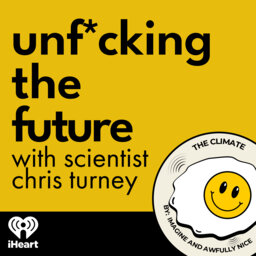Blue Carbon with Sanjayan
Did you know that one of the most effective absorbers of carbon dioxide is... seaweed? Sanjayan, the CEO of Conservation International, joins the show to talk about how we can harness the power of the ocean to slow the impacts of global heating. Show notes from Chris:
- The world’s oceans are crucial for the health of our planet, helping regulate the climate and global carbon budget. The London School of Economics has a great explainer. Coastal ecosystems are super important. Mangrove forests and seagrass meadows are incredibly effective at locking up carbon, helping limit the amount of global heating. The US National Oceanic and Atmospheric Administration (or NOAA for short) has a fabulous 101 here.
- Conservation International are doing amazing work with communities around the world to protect nature. You can learn more about the inspiring Vida Manglar “Blue Carbon” Project in Columbia on their website.
- There are so many fantastic community projects around the world that bring people together to work on nature-based solutions. Search online for a group near you. For those in California, check out Tree People and Friends of the LA River. And of course, wherever you are, there is the brilliant Support and Feed, founded by Maggie Baird. Sign up today to eat at least one plant-based meal a day for 30 days. Take the pledge today.
 Unf*cking the Future
Unf*cking the Future


